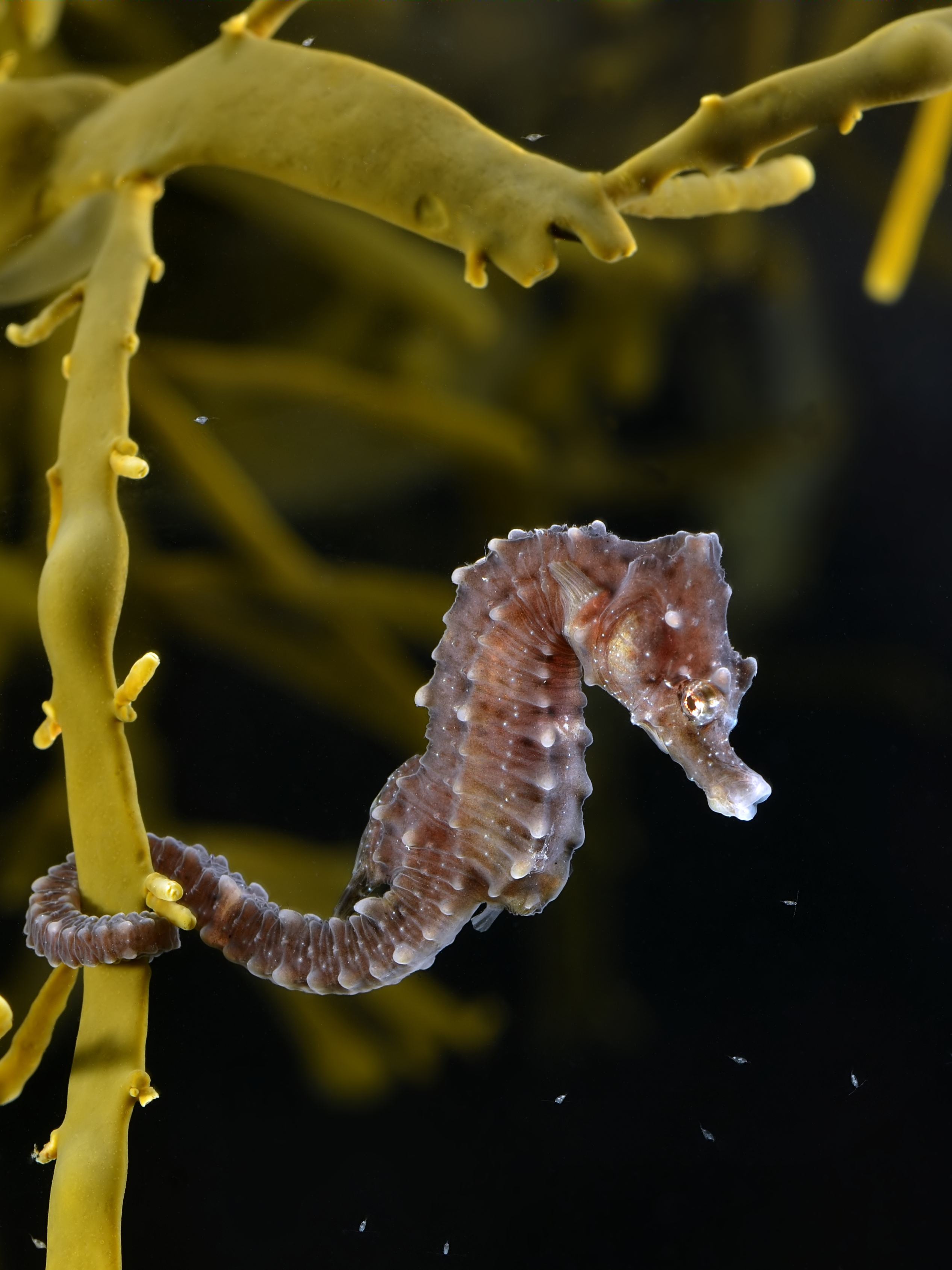How to spot the Seahorse when scuba diving
Hippocampus
Found worldwide in temperate and tropical coastal waters. Over 45 species inhabit shallow seagrass beds, mangroves, coral reefs, estuaries, and sandy bottoms, typically in protected areas with lower wave action. Highest diversity in the Indo-Pacific region.
Can be found year-round. Early morning dives sometimes offer better chances as they may be more active before currents intensify. Some species show seasonal breeding aggregations (location-specific).
Found across a wide temperature range from cool temperate (10°C/50°F) to warm tropical waters (30°C/86°F), depending on species and location.
Look for them in seagrass beds, attached to soft corals, gorgonians, sponges, rope, fishing nets, or artificial structures. They often hold onto objects with their prehensile tails in areas with some current. They're well-camouflaged and stationary, so slow, methodical searching is key. Popular spots include Nelson Bay (Australia), Dauin/Dumaguete (Philippines), Lembeh Strait (Indonesia), Chaloklum (Thailand), and select Caribbean sites. Avoid touching or disturbing them as they're fragile and often site-faithful.
Hey, planning your next dive trip?
Start logging your dives on Depthlog! You will regret not starting sooner 😉
for free!
Worldwide observation of the Hippocampus
Pan around to see all the observations
Data sources
- Photos: Wikimedia Commons
- Distribution and specie data: GBIF (Global Biodiversity Information Facility)
Click to explore other marine creatures, their distribution and the guide on how to spot them.
Still on dry land? Join fellow dive enthusiasts who've already discovered the easiest way to track their underwater adventures and their diving analytics!
